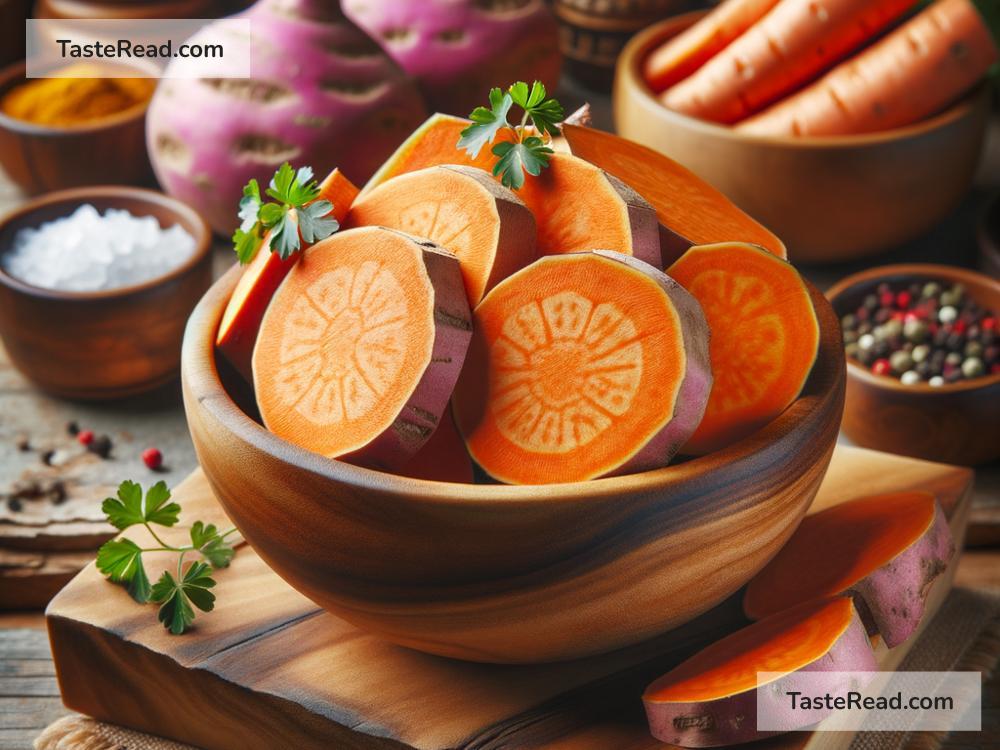The Curious Differences Between Sweet Potatoes and Yams
Sweet potatoes and yams are two terms often confused or mistakenly used interchangeably, especially in grocery stores and recipes. Many people assume they’re the same vegetable. However, in reality, sweet potatoes and yams are quite different—not just in taste and texture, but in their origins, appearance, and even their botanical classifications. In this article, we’ll explore these curious differences so you’ll never mistake one for the other again!
Sweet Potatoes: A Sweet Delight
Let’s start with sweet potatoes, since they’re more common in American households and probably what you’ve eaten at Thanksgiving dinner.
Sweet potatoes (scientific name Ipomoea batatas) are root vegetables belonging to the morning glory family. They originally came from Central and South America and were first cultivated thousands of years ago. Today, sweet potatoes are grown in many parts of the world, especially in the United States, Asia, and Africa.
Sweet potatoes come in different varieties and colors, but the ones you’re likely familiar with are the ones with orange flesh and reddish-brown skin. There are also yellow, purple, and even white sweet potatoes, though they may not be as common. When cooked, sweet potatoes have a naturally sweet flavor and a soft, smooth texture, making them perfect for casseroles, mashed dishes, fries, and pies. They’re also packed with nutrients—high in fiber, vitamin A, and antioxidants, sweet potatoes are a healthy choice for any meal.
Yams: The Exotic Cousin
Now, let’s talk about yams. Yams (scientific name Dioscorea) are a completely different type of root vegetable. They come from the yam family and are native to Africa, Asia, and the Caribbean. In these regions, yams are a staple food and are often used in traditional dishes.
Yams look very different from sweet potatoes. They usually have rough, scaly, or bark-like skin, which might remind you of tree trunks. Their flesh can also range in color from white to purple or even pink, but they’re usually starchy and dry rather than sweet. This makes them more similar to regular potatoes than to sweet potatoes.
Yams are much larger than sweet potatoes—they can grow several feet in length and weigh up to 100 pounds! Because they’re a tropical crop, you won’t see many true yams in grocery stores in the United States, even if they’re labeled as “yams.” Most real yams are imported and sold in specialty or international markets.
Why Are They Confused?
So, if sweet potatoes and yams are so different, why do people mix them up? The confusion originates in the United States and dates back to the 20th century.
Sweet potatoes exist in two main types: firm and soft. Firm sweet potatoes have white or light yellow flesh, while soft sweet potatoes usually have orange flesh. When soft sweet potatoes were introduced in the U.S., growers and marketers wanted to separate them from their firmer counterparts. They borrowed the word “yam” from the African term “nyami,” which referred to the tuber crops that African slaves predominantly consumed. This led to orange-fleshed sweet potatoes being labeled as “yams,” even though they’re not actually yams.
To this day, in many grocery stores in the U.S., orange-fleshed sweet potatoes are mislabeled as “yams.” If you pick up a can of “candied yams,” you’re probably just buying sweet potatoes! True yams are much harder to find in regular stores.
How to Tell Them Apart
While both sweet potatoes and yams are root vegetables, they have distinct traits that make them easy to tell apart once you know what to look for:
- Skin Texture: Sweet potatoes have smooth, thin skin, while yams have rough, scaly, or bark-like skin.
- Flesh Type: Sweet potatoes can have orange, yellow, white, or even purple flesh, and are usually sweet and soft when cooked. Yams tend to have white or purple flesh and are starchy and dry.
- Size: Sweet potatoes are typically small to medium-sized. Yams, on the other hand, can grow much larger—some can be as big as your forearm!
- Availability: True yams are hard to find in the U.S. and are often sold in specialty shops. Sweet potatoes, however, are widely available at grocery stores everywhere.
Nutritional Benefits
Both sweet potatoes and yams have health benefits, but sweet potatoes are the nutritional champion. Packed with vitamin A, beta-carotene, fiber, and antioxidants, they can boost your immune system, improve eye health, and support digestion. Yams are a good source of energy due to their high carbohydrate content, but they don’t contain as many vitamins and minerals as sweet potatoes.
Conclusion
Though sweet potatoes and yams might seem similar at first glance, they’re worlds apart when you dig a little deeper. Sweet potatoes are sweet and smooth, perfect for pies and mashed dishes. Yams are starchy, dry, and ideal for hearty, savory dishes in tropical cuisines. The next time you’re at the grocery store or cooking in the kitchen, you’ll now know the difference between the two—and you’ll never mistake one for the other again!


